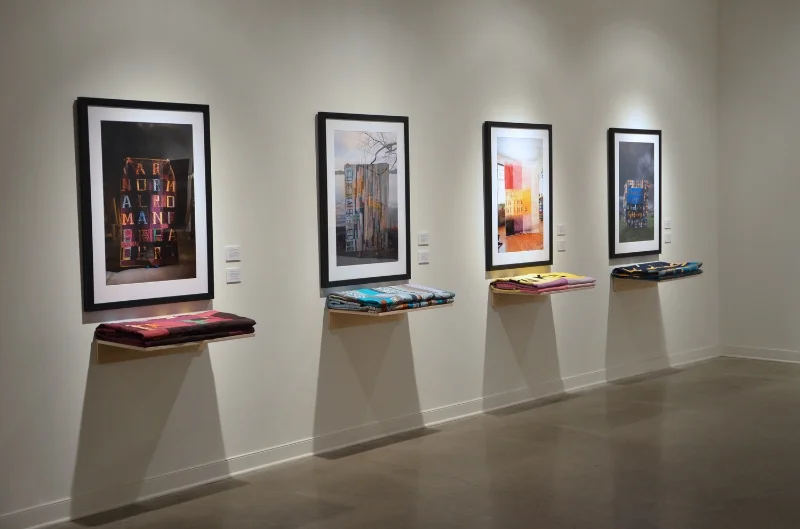NEW MAPS OF PARADISE
Curated by Diana Sherlock, New Maps of Paradise was both a mid-career survey and a critical reflection of our individual and collaborative practices since 2001 exhibited at The Nickle Galleries. Composed of past works, archival material, project ephemera, and two new works, the exhibition directly respond to—and critically reflected upon—our histories as social agitators, community organizers, and social engagement artists. To accompany the exhibition, The Nickle produced a full colour catalogue and programmed a series of talks.
From Sherlocks curatorial statement: "New Maps of Paradise charted, in an intentionally ambiguous fashion, the creative practices of Calgary artists Eric Moschopedis and Mia Rushton. Eric + Mia as they are more commonly known, have worked in the Calgary arts community, singularly since the early 2000s, and collaboratively since 2001. Eric’s practice emerged from the theatre and performing arts communities and he was an organizing force with Bubonic Tourist and such events as the Mutton Busting Festival. Mia was immersed in drawing and contemporary craft practices, particularly textiles. Their projects consistently animate specific communities and engage participants as collaborators and citizens in playful politics. New Maps of Paradise meandered through their ongoing collaborative research into urbanism, humour in art, theatre and performance, contemporary craft-based practices, and the professionalization and economics of the art industries.
New Maps of Paradise at the Nickle Galleries is Eric Moschopedis and Mia Rushton first major solo museum show. The exhibition loosely borrows its curatorial tactics from cultural geography and ethnology, which are prevalent throughout the artists’ working processes as well. Its design thematically mapped the artists’ interdisciplinary practices through their community and narrative networks. New Maps of Paradise was comprised of archival material, past works, ephemera, incomplete ideas and two new works. The gallery was divided into sections, the map, the archive, the collection and storage using idiosyncratic display strategies. A field guide will accompany the exhibition."


























